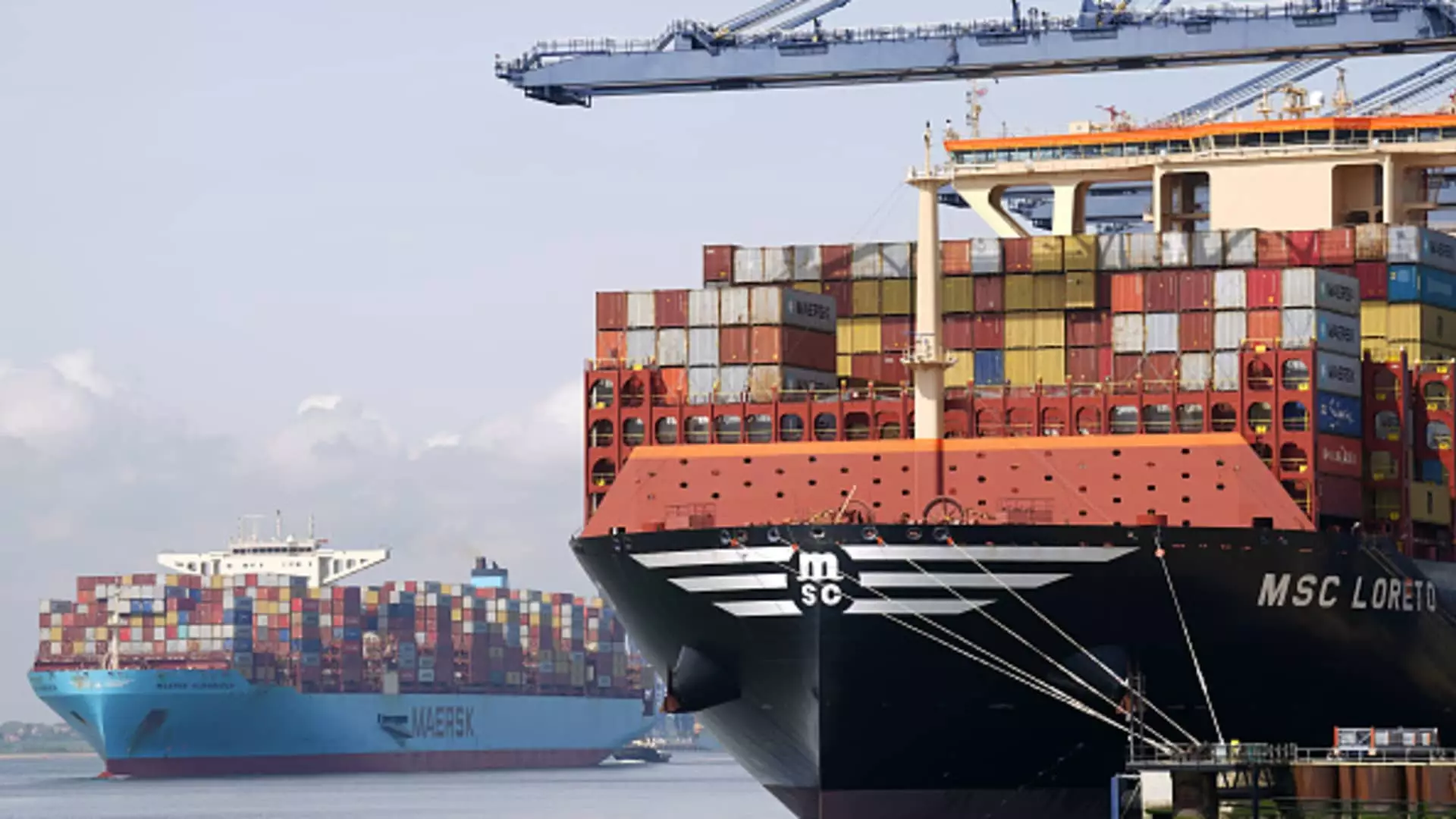As we step into the first quarter of 2025, investors find themselves grappling with an unsettling mix of anticipation and anxiety. The resurgence of U.S. tariffs, led by the decisions of President Donald Trump, has cast a grim shadow on the earnings season. The sweeping rates announced in April, compounded by the erratic behavior of policymakers, have transcended even the most pessimistic forecasts. The discussions ongoing between the European Union, the U.K., and the United States only reflect the urgency of a situation that feels like a slow-motion train wreck. How did we get to this point? The sheer unpredictability injected into global markets due to tariff announcements has resulted in a palpable sense of trepidation among investors, who are left to wonder about the labyrinth of economic repercussions that lie ahead.
A Fragile Luxury Market: LVMH’s Cautious Tone
In the luxury sector, uncertainty looms large as evidenced by LVMH’s recent earnings report. Despite being a titan in its field, the company readily admitted that its core demographics — the so-called “aspirational clientele” — may tighten their purse strings in light of rising tariffs and overall economic volatility. It’s a sobering realization for an industry that thrives on excess and opulence. The absence of hard numbers in LVMH’s guidance hints at a deeper concern that goes beyond mere financial metrics; it reflects a world where consumer sentiment can shift overnight, leaving extravagant brands vulnerable to the winds of economic change. How precarious is the fine line these luxury giants must walk when economic uncertainty is the prevailing narrative? Investors should be wary: brands once presumed deeply insulated from economic downturns now find themselves exposed.
The Semiconductor Conundrum: ASML’s Unsettling Outlook
The semiconductor industry faces its own set of challenges, as highlighted by ASML, a pivotal player in global technology. The term “new uncertainty” looms heavily in their earnings report, symbolizing much more than temporary turbulence. ASML’s machinery is essential for innovation across tech spaces, yet the tariffs are undermining demand forecasts. Peculiarly, it’s the very fabric of the tech landscape that appears frayed by economic policies. If companies like ASML — which are crucial for keeping the technological engine running — are admitting to a shaky future, it raises larger questions about the supply chains that propel the entire industry. How far will this uncertainty reach? If the tools for progress are being stifled by policy, then we might be entering an era of technological stagnation just when we need growth the most.
Shipping Giants and the Geopolitical Jigsaw: Maersk’s Volatility
As a barometer for global trade, Maersk’s forthcoming earnings should offer frontline insight into the contorted landscape of maritime logistics shaped by tariffs. The words “significant” and “not good news for the global economy” in their recent statements echo the sentiments of an industry caught in the crosshairs of geopolitical strife. With earnings expectations plummeting from $3.6 billion to a projected $2.3 billion, the message is clear: the shipping sector is not merely a pawn in this game; it’s potentially facing an existential crisis. The volatility around Maersk’s shares is a reflection of the chaos enveloping trade routes, and investors must acclimate to a new normal where unpredictability is the only constant. Can they find a won’t-be-continued approach to stability amid such tumult?
Oil and Gas: The Quagmire of Shell’s Earnings
The oil and gas sector is not immune to the turbulent winds of tariff unpredictability. Shell’s recent performance has left much to be desired, with adjusted earnings forecasted to drop significantly from last year. The balance between recommitting to efficient practices and coping with fluctuating oil prices makes this segment particularly treacherous for investors. Increased emphasis on shareholder returns and cost adaptation is not enough if the external market continues to churn unpredictably. The existential question remains: how resilient is Shell, really? With the potential for falling crude prices and impending tariffs clouding the outlook, investors may find that even industry stalwarts can falter.
Aerospace and Pharma: The Wildcards of Economic Impact
Lufthansa and Novo Nordisk stand at different ends of the spectrum but are equally affected by the economic malaise catalyzed by tariffs and geopolitical interactions. With Lufthansa grappling with the fallout from decreasing passenger numbers while also factoring in the complexities around international travel, are they entering a stage of turbulence that will leave lasting scars? Novo Nordisk, on the other hand, faces an impending investigation into pharmaceutical imports that hangs like the sword of Damocles over its lucrative U.S. market. The uncertainty in lifeblood markets will certainly drive concern among investors.
As we dive headfirst into this earnings season, one thing is clear: those with their eyes on economic growth must vigilantly navigate the murky waters of policy-induced turbulence that threatens to redefine the landscape, leaving few sectors unscathed.

